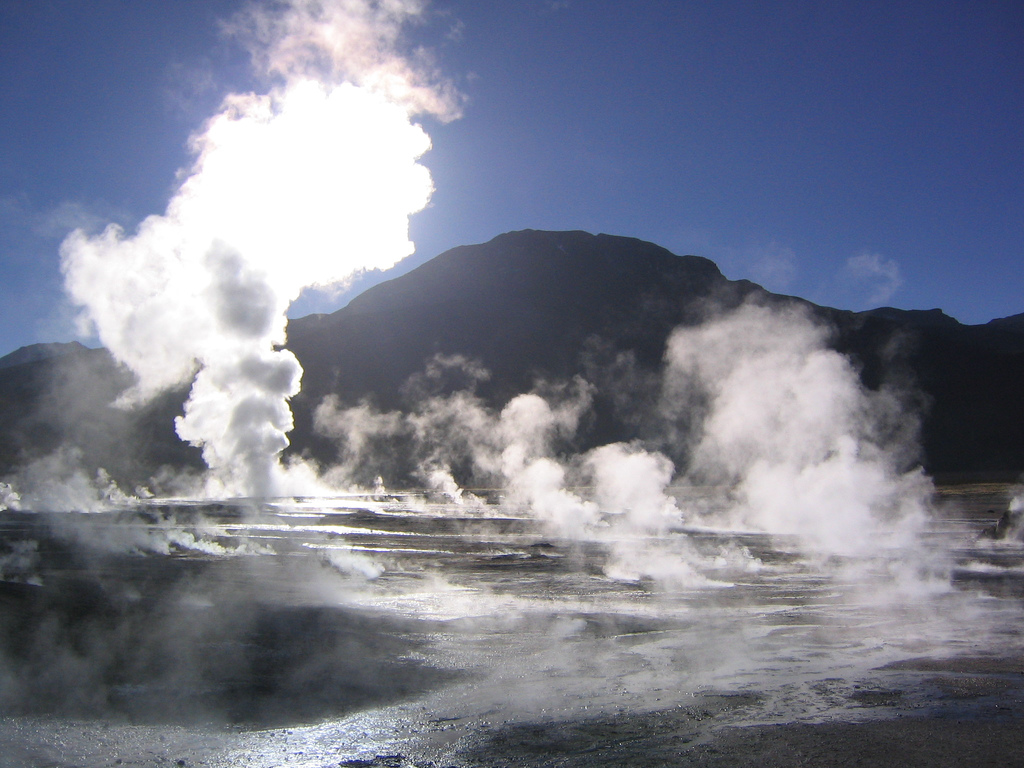Chile’s Tatio Geysers won´t see further geothermal exploration
Chile's government announced its intention to abandon any exploration at El Tatio (Tatio Geysers), a famous tourism attraction in Northern Chile.
Reported from Chile, “Following widespread concern in response to last September’s 60-meter-high artificial geyser, which resulted from explorations into geothermal energy near the famed Tatio Geysers tourism attraction in northern Chile, the government has announced its intention to abandon any explorations in the area.
“The explorations in the vicinity of El Tatio are suspended. The use of these wells is definitively discarded,” said a government spokesman this week.
Last year, Chile’s Regional Environmental Commission (COREMA) gave permission to the business Geotérmica del Norte (GDN) to begin work on a geothermal energy plant in the Antofagasta Region (II). The plant would use the same kind of heat and steam that pushes 90-degree Celsius water out of the geysers to turn turbines and generate electricity.
GDN was digging test-drilling wells a few kilometers deep when the artificial geyser began to erupt on September 8th. The unexpected geyser lasted 27 days, attracting national and international attention. Most eruptions in the field are no more than one meter high and the largest eruption ever recorded previously was less than six meters high.
According to investigations in September and October, the high-pressure geyser, which was accompanied by strong underground vibrations, was caused by the failure of valves and pipes in a 4.5-kilometer-deep well (ST, Oct 5, 2009).
Critics of the project worry that geothermal projects in the region could damage the Tatio Geysers, the world’s third largest geyser field and one of northern Chile’s most important tourist attractions (ST, Nov 1, 2009).
GDN was unprepared for the geyser and worked for more than a month before it was finally able to plug the leak. Government agencies then indicted with 14 failures of appropriate security, including lack of protocol for emergencies such as this (ST, Oct 13, 2009). While certainly not as devastating as the current BP oil leak in the Gulf of Mexico, the Chile geyser and the BP catastrophe showcase the negligence of many exploration companies and their failure to provide back-up safety measures should a mishap occur.
Although investigations are not expected to be finished until August, the government official said, “We aren’t waiting for the results of the analysis, we’ve already decided to stop geothermal exploration in this zone.”
GDN has not given up its interest in the region. “We aren’t considering abandoning it,” said a company press release. “The project is only halted temporarily waiting for the report that authorities are finishing.”
The company added, “The studies indicate to us that the environmental parameters have not experienced variations. Which is to say, neither superficial manifestations (the geysers) nor the environment seem to be affected.”
GDN is also pursuing projects in other areas of the Region. “Conservative estimates show a potential in geothermal energy for Chile of more than 2,200MW, which are primarily in the north.” This year, GDN is spending more than US$15 million in scouting new areas.
Following El Tatio, the group’s next priority would be the Pampa Apacheta area, 70 kilometers north of the geysers. The group has also drilled in Chillán in southern Chile, but that project remains on standby because the energy potential there is less.
GDN is owned by Enel (51% share), Enap (44%), and Codelco (5%). Enel is the same transnational company that seeks to invest US$7 billion in construction of five large dams in far southern Patagonia. The energy would be taken north to Chile’s central valley over a 2,000 long transmission line.”
Source: Santiago Times


















